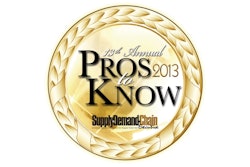Parsippany, N.J.—Feb. 20, 2013—INTTRA, an active global network for ocean shipping, released findings of a global study of high-volume shippers and freight forwarders that included four of the top five global logistics providers. Throughout the past four years, economic volatility intensified pressure on carriers and shippers to seek new ways to reduce costs and have seen no relief on pressure to increase service levels. One cost reduction method that demonstrated results across government and commercial sectors is electronic invoicing (e-Invoicing). Once referred to simply as a “best practice,” e-invoicing is emerging as a critical cost reduction tool for companies in or those impacted by the struggling ocean shipping industry.
“Invoicing, dispute resolution and payment processes are highly fragmented across the industry and represent a significant area of cost and inefficiency,” said Otto Schacht, Executive Vice President of Sea Logistics at Kuehne + Nagel, a global freight forwarder. “Logistics providers and their ocean carriers can benefit from standardizing the process, improving visibility to their cash liabilities and providing a more transparent invoicing process, all of which save time and resources.”
The 2012 global study found that:
- About 81 percent of respondents want to receive invoices electronically in 2013
- About 77 percent rate “managing disputes” as their greatest invoicing challenge, with reducing the “time and cost to process invoices” as a close second at 68 percent
- The top 10 country e-invoicing launch preferences for shippers include the United Kingdom, China, the Netherlands, U.S., Germany, Singapore, Australia, France, Hong Kong and Italy
The ocean shipping industry continues to face financial challenges including record high fuel costs; a reduction in traditional funding sources; decreasing global volume; and excess capacity. Manual payment processing results in wasteful costs for carriers and shippers on a daily basis, which can add up to millions of dollars annually. The European Commission Informal Task Force on e-Invoicing found that the average cost of processing a paper invoice in Europe was approximately €30 ($48). According to a Billentis 2012 E-Invoicing/E-Billing Report, switching to electronic invoicing yielded 50 to 80 percent cost savings. For carriers, that could mean a potential savings of $55 to $88 for every Bill of Lading.
Reduction of errors and disputes as a cost-cutting method remains the top driver of increased demand for e-Invoicing in 2013. Approximately 93 percent of the survey’s respondents agreed in wanting to manage disputes electronically. Today’s invoice error rates are estimated between 20 to 25 percent of all freight invoices. This results in delays and non-payment for carriers and drains time and resources for both parties who must work together to process and resolve these discrepancies.
“We are seeing a rapidly growing adoption and need for e-Invoicing in the ocean shipping industry,” said Rod Agona, Managing Director, eInvoice, INTTRA. “It’s no secret that this sector is dealing with a tough economy—one that has likely forever changed. It has both carriers and shippers looking for ways to be more efficient and profitable and e-invoicing is a proven method to achieve those goals.”
INTTRA’s 2012 e-Invoicing survey participants included more than 30 high volume ocean shippers and freight forwarders, including four of the top five freight forwarders in TEU volume. The survey was conducted through the fall of 2012 via one-on-one interviews and electronic surveys with director and above executives from commercial, IT and finance.











